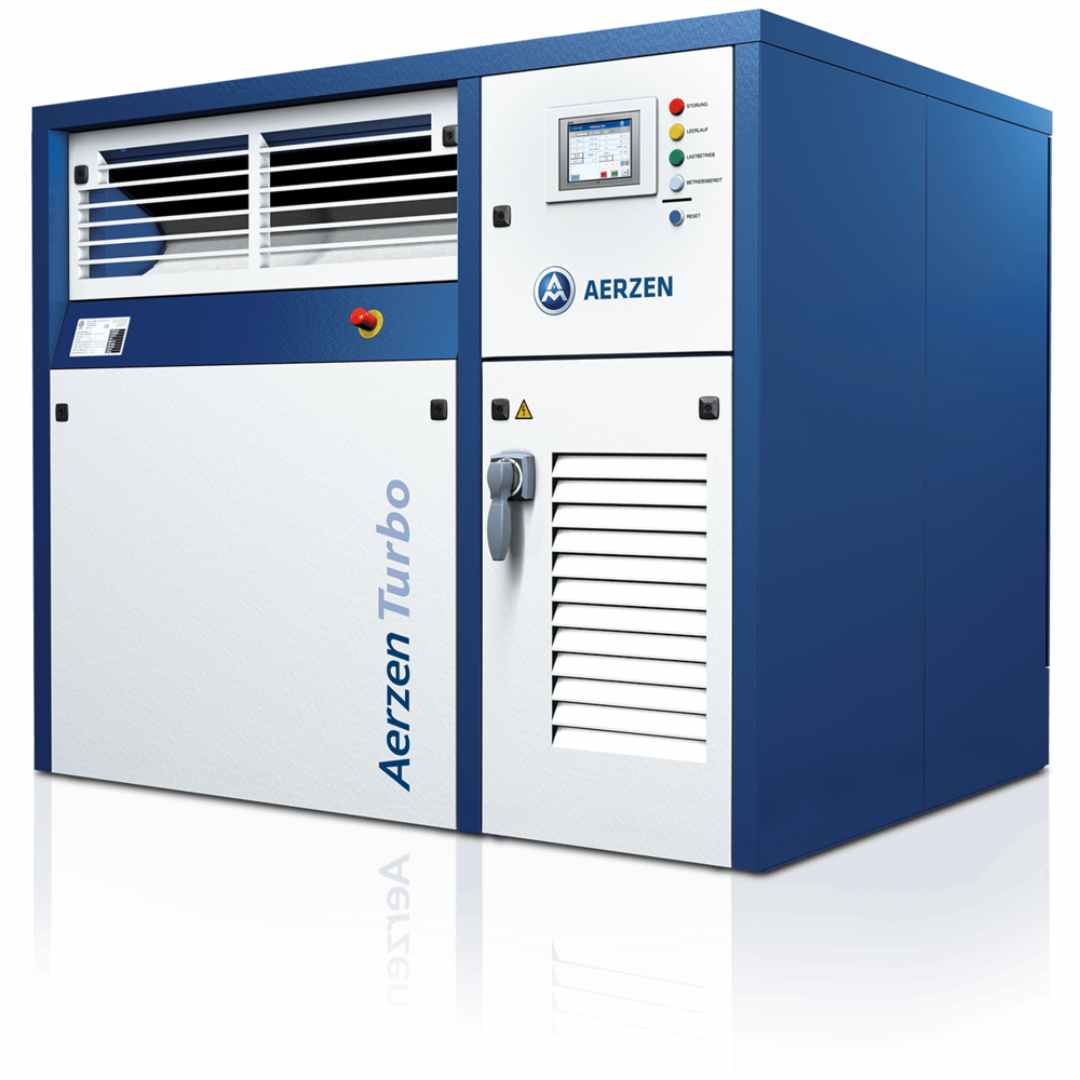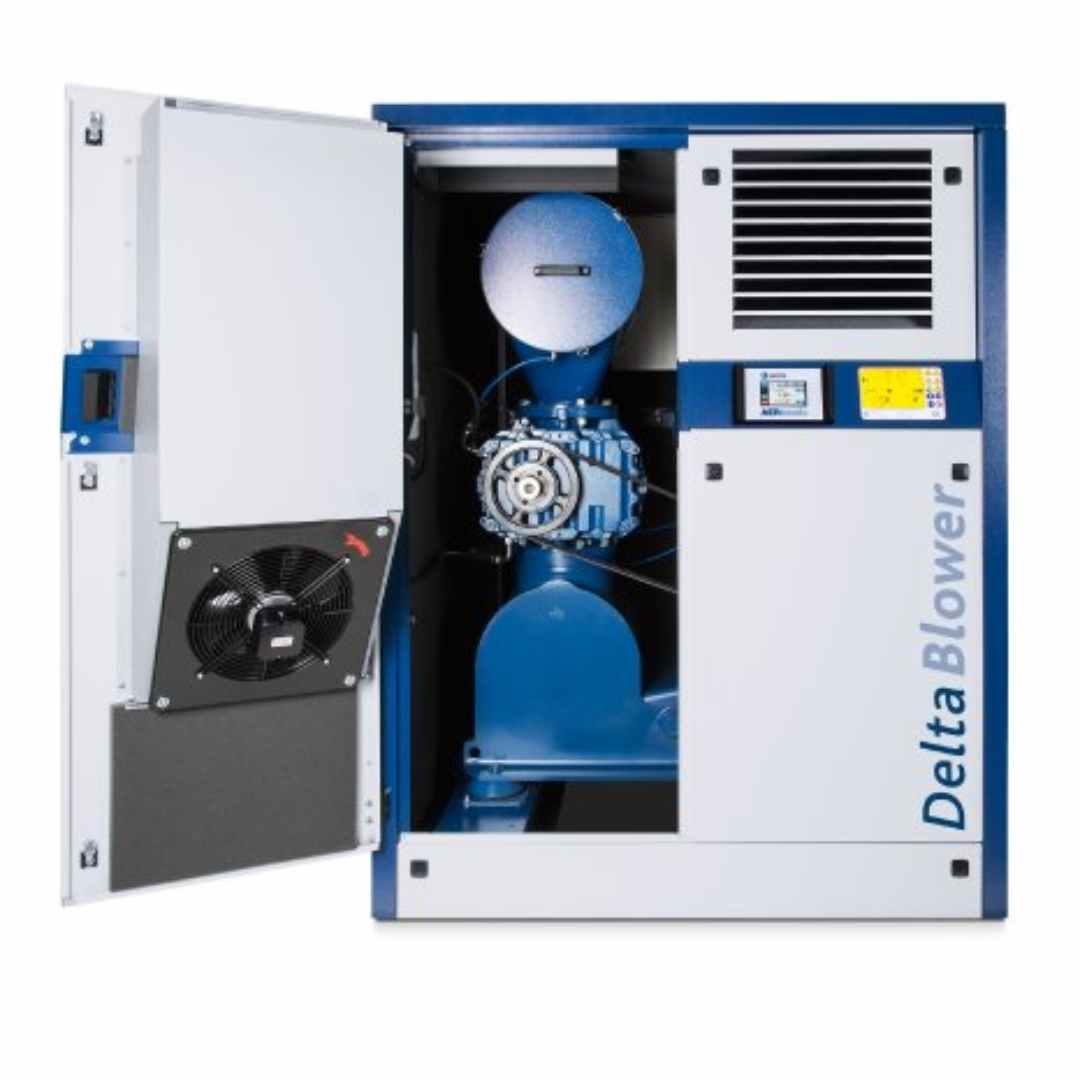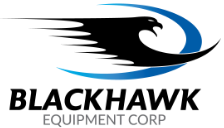Aerzen Air Blowers: Achieving Peak Performance in Wastewater Treatment and Pneumatic Conveying
05/14/2025

In critical industrial processes such as wastewater treatment and pneumatic conveying, a consistent, reliable, and efficient supply of air is not just beneficial—it's fundamental to operational success. Engineers in these fields understand that the performance of their air blowers directly impacts process effectiveness, energy consumption (a major operational cost), and overall system reliability. Aerzen, a global leader with a heritage stretching back to 1864, has consistently set the benchmark for innovation and quality in blower and compressor technology. Their motto, "Expect Performance," is a promise they deliver on. At Blackhawk Equipment, we are proud to partner with Aerzen, offering their cutting-edge air blower solutions to help our customers achieve peak operational performance and efficiency in these demanding applications, especially as we look at the demands of May 2025.
The Unyielding Demand: Why Air Blowers are Indispensable
Air blowers are the heart of many vital industrial systems, providing the necessary airflow or pressure differential to drive key processes. Two prominent applications highlight their importance:
-
Wastewater Treatment:
- The aeration stage in biological wastewater treatment is crucial for removing organic pollutants. Aerzen blowers supply the vast quantities of oxygen required by microorganisms to break down waste materials. Consistent and precisely controlled airflow ensures optimal biological activity, meeting stringent effluent quality standards.
- Significantly, aeration blowers often represent the single largest energy consumer in a wastewater treatment plant (WWTP), sometimes accounting for up to 60-70% of total electricity usage. Therefore, selecting highly efficient and correctly sized blowers is paramount for minimizing operational costs and environmental impact.
-
Pneumatic Conveying:
- Pneumatic conveying systems use air blowers to transport a wide variety of bulk materials—powders, granules, pellets—through pipelines. This method is essential in industries like food processing, pharmaceuticals, chemicals, and construction materials.
- Reliable airflow from Aerzen blowers is critical to prevent line blockages, ensure consistent material transfer rates, and maintain the integrity of the conveyed product, especially for fragile or sensitive materials. Whether for dilute phase (high velocity, low material concentration) or dense phase (low velocity, high material concentration) conveying, the right blower technology is key.
Aerzen: Over 150 Years of Engineered Blower Excellence
Aerzen's long-standing reputation is built on a foundation of German engineering precision, continuous innovation, and an unwavering commitment to customer needs. They specialize in developing highly efficient, durable, and oil-free blower and compressor solutions. Their deep understanding of process air applications allows them to offer a comprehensive portfolio tailored to virtually any industrial requirement, always with a focus on reducing lifecycle costs and maximizing uptime.
customer needs. They specialize in developing highly efficient, durable, and oil-free blower and compressor solutions. Their deep understanding of process air applications allows them to offer a comprehensive portfolio tailored to virtually any industrial requirement, always with a focus on reducing lifecycle costs and maximizing uptime.
A Spectrum of Solutions: Key Aerzen Blower Technologies
Aerzen offers a diverse range of blower technologies, each optimized for specific performance characteristics and application demands:
-
Positive Displacement (PD) Blowers (Rotary Lobe Blowers – e.g., Aerzen Delta Blower Series):
- These are the traditional workhorses, featuring two or three precisely machined intermeshing rotors that trap and transport air. They deliver a relatively constant volume of air regardless of discharge pressure fluctuations (within their operating range).
- Key Advantages: Robust and simple design, inherent oil-free air delivery, excellent reliability, suitable for a wide range of pressures and vacuums, and relatively low initial cost. Aerzen has continuously refined its PD blower designs with features like optimized rotor profiles for higher efficiency, effective pulsation dampening for quieter operation, and compact footprints.
-
Screw Blowers (Rotary Screw Technology – e.g., Aerzen Delta Screw Series):

- Similar to screw compressors, these units use two intermeshing helical screw rotors to compress air internally before discharge. This internal compression generally results in higher energy efficiency compared to PD blowers, especially in higher pressure ranges.
- Key Advantages: Significant energy savings (often 15-30% over PD blowers in optimal ranges), good turndown capabilities (ability to efficiently vary output), oil-free air delivery, and suitability for pressure applications typically up to 1.5 bar (g) or higher for specific designs. Aerzen's Delta Screw series is known for its optimized rotor profiles and efficient cooling systems.
-
Turbo Blowers (High-Speed Centrifugal Blowers – e.g., Aerzen Turbo G5plus Series):
- This represents the cutting edge of blower technology. Turbo blowers utilize a high-speed impeller, often driven directly by a permanent magnet motor and supported by advanced bearing systems like air foil bearings or magnetic bearings, eliminating the need for oil lubrication and gearboxes.
- Key Advantages: Exceptional energy efficiency, particularly at or near their design point and in applications requiring consistent flow and pressure. They offer a very wide turndown range, compact design, extremely low noise and vibration levels, and are inherently oil-free. Aerzen Turbo units feature advanced aerodynamic designs and integrated variable frequency drives (VFDs) for optimal performance.
-
-
Hybrid Blowers (e.g., Aerzen Delta Hybrid Series):
 The Delta Hybrid technology intelligently combines the principles of positive displacement (rotary lobe) and screw compression. This innovative design aims to bridge the efficiency gap that can exist between traditional PD blowers and screw compressors, particularly in the mid-pressure ranges.
The Delta Hybrid technology intelligently combines the principles of positive displacement (rotary lobe) and screw compression. This innovative design aims to bridge the efficiency gap that can exist between traditional PD blowers and screw compressors, particularly in the mid-pressure ranges.- Key Advantages: Offers significant energy savings compared to conventional PD blowers in its target operating envelope, robust design, and reliable performance.
-
Intelligent Controls and System Management (AERsmart, AERtronic):
- Modern industrial processes rarely rely on a single blower operating in isolation. Aerzen’s advanced control systems, like AERsmart, are designed to manage and optimize multiple blower units (even of different technologies – PD, screw, turbo) operating in parallel. These controllers ensure demand-based operation, optimal load sharing between units to maximize overall system efficiency, and can provide predictive monitoring insights. They are also designed for seamless integration with overarching plant SCADA (Supervisory Control and Data Acquisition) systems.
Tailoring Aerzen Technology for Optimal Application Performance
The choice of Aerzen blower technology is highly dependent on the specific application:
- Wastewater Treatment: For deep aeration basins requiring higher pressures and where energy efficiency is paramount, Aerzen Screw or Turbo blowers are often the preferred choice. For smaller plants or applications with highly variable air demand where turndown and robustness are key, Aerzen PD blowers or Delta Hybrid units can be ideal. The AERsmart controller is particularly valuable here for managing multiple units to match fluctuating dissolved oxygen demands.
- Pneumatic Conveying: The selection depends on factors like material characteristics (abrasiveness, fragility), conveying distance, required pressure or vacuum, and whether it's a dilute or dense phase system. Aerzen PD blowers are frequently used for their robustness and ability to handle pressure fluctuations. For longer distances or higher pressure requirements, Aerzen Screw blowers can offer better efficiency.
Beyond Initial Cost: Aerzen's Focus on Lifecycle Efficiency
Aerzen emphasizes the importance of considering Total Cost of Ownership (TCO). While the initial purchase price is a factor, energy consumption typically dominates the lifecycle cost of an industrial blower. By investing in Aerzen’s highly efficient blower designs, intelligent controls, and ensuring proper system sizing and selection, facilities can achieve substantial long-term operational savings that far outweigh any initial cost differences.
Blackhawk Equipment: Your Expert Partner for Aerzen Blower Solutions
At Blackhawk Equipment, we understand the nuances of process air requirements. Our partnership with Aerzen allows us to offer:
- Expert Application Engineering: Assisting you in selecting the most appropriate and energy-efficient Aerzen blower technology for your wastewater treatment or pneumatic conveying needs.
- System Design and Integration: Providing guidance on system layout, piping, and control integration to maximize performance.
- Comprehensive Service and Support: Offering installation, commissioning, preventative maintenance, and genuine Aerzen spare parts to ensure the longevity and reliability of your investment.
Conclusion: Powering Your Processes with Aerzen's Engineered Performance
For engineers seeking reliable, efficient, and technologically advanced air blower solutions for wastewater treatment, pneumatic conveying, or other critical industrial applications, Aerzen stands as a clear leader. Their comprehensive portfolio, spanning Positive Displacement, Screw, Turbo, and Hybrid technologies, coupled with intelligent control systems, ensures an optimized solution for virtually any requirement. By focusing on lifecycle costs and engineered performance, Aerzen helps industries improve their bottom line while meeting their operational and environmental goals.
Contact Blackhawk Equipment today to discuss your specific air blower challenges. Let our team of experts, backed by Aerzen's world-class technology, help you achieve peak performance and efficiency in your vital industrial processes.
